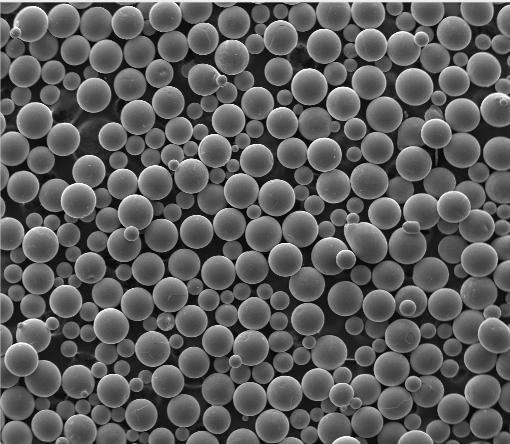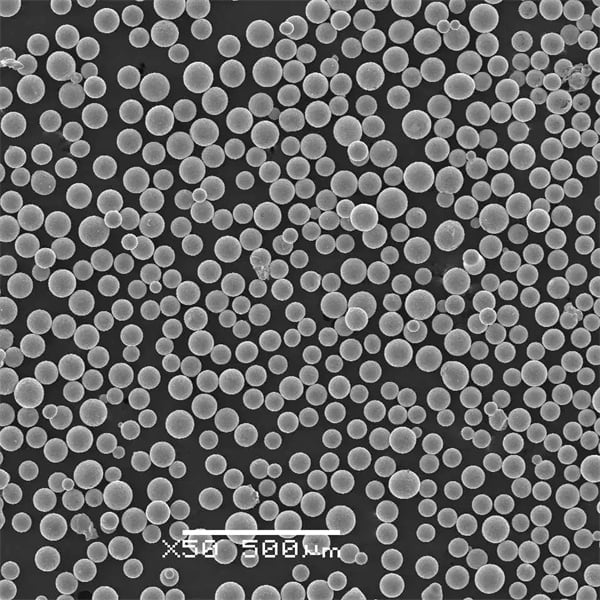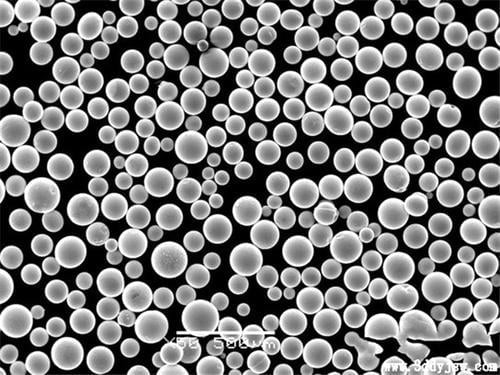Selective Laser Melting (SLM), also known as Additive Manufacturing (AM), has revolutionized the way we create complex metal parts. This technology uses a laser beam to melt and fuse together metal powder particles layer by layer, building intricate structures directly from a digital 3D model. Choosing the right metal powder is critical for successful SLM, and aluminum alloy 6061 stands out as a popular and versatile option.
This comprehensive guide dives deep into the world of 6061 metal powder for SLM, exploring its properties, applications, advantages, limitations, and various available options. We’ll equip you with the knowledge to make informed decisions for your next SLM project.
the Composition of Potência 6061 para SLM
6061 is a widely used heat-treatable aluminum alloy known for its excellent balance of strength, machinability, and corrosion resistance. Here’s a breakdown of its key components:
- Magnesium (Mg): The primary alloying element, contributing to strength and corrosion resistance.
- Silício (Si): Improves castability and weldability.
- Cobre (Cu): Enhances strength but can reduce corrosion resistance.
- Manganês (Mn): Refines grain structure and improves hot strength.
- Crómio (Cr): Further enhances corrosion resistance.
The specific percentages of these elements determine the final properties of the 6061 powder and the resulting SLM part.

Exploração de modelos específicos de pós metálicos
The world of 6061 metal powders for SLM offers a diverse range of options from various suppliers. Here’s a closer look at ten prominent models:
| Modelo de pó metálico | Descrição | Características principais |
|---|---|---|
| APOS AlSiMg0.5 (Gas Atomized) | This gas-atomized powder boasts excellent flowability and packing density, leading to good printability and minimal porosity in the final part. | – High sphericity – Tight particle size distribution – Good surface finish |
| SLM Solutions AlSiMg0.5 | Optimized for use with SLM Solutions machines, this powder offers consistent performance and reliable results. | – Tailored for specific SLM systems – Consistent laser absorption characteristics – Predictable mechanical properties |
| EOS Aluminium AlSiMg0.5 | Developed specifically for EOS machines, this powder ensures smooth powder bed formation and efficient laser melting. | – Compatible with EOS build platforms – Optimized powder flow characteristics – Minimized spatter and splatter-related defects |
| Renishaw AM260 | A high-performance option from Renishaw, AM260 delivers excellent mechanical properties in SLM-printed parts. | – High strength and ductility – Good fatigue resistance – Suitable for demanding applications |
| DMG Mori AlSiMg 0.5 | This gas-atomized powder from DMG Mori is known for its tight particle size distribution and minimal impurities. | – Consistent powder flow – Reduced risk of process defects – Suitable for high-precision applications |
| Proto Labs AlSiMg 0.5 | Offered by Proto Labs for their on-demand SLM services, this powder ensures consistent quality and reliable part production. | – Stringent quality control – Consistent material properties – Ideal for rapid prototyping and short-run production |
| ExOne AlSiMg 0.5 | Compatible with ExOne’s binder jetting AM process, this powder can be used to create complex geometries with good surface finish. | – Suitable for binder jetting AM – Good dimensional accuracy – Potential for post-processing for enhanced properties |
| LPW Aluminium AlSiMg0.5 | LPW’s offering provides a reliable option for users of their SLM systems, ensuring consistent printability and predictable results. | – Optimized for LPW machines – Consistent powder characteristics – Suitable for a wide range of applications |
| Additive Industries AluminiumSiMg0.5 | This gas-atomized powder from Additive Industries boasts high purity and tight particle size distribution for reliable SLM processing. | – Low oxygen content – Consistent flowability – Good mechanical properties in printed parts |
| Voxeljet Alumina (Al2O3) | While not strictly 6061, Voxeljet’s alumina powder offers an alternative for applications requiring high wear resistance and thermal stability. | – Excellent wear resistance – High melting point – Limited use for structural applications |
It’s important to note that this list is not exhaustive. Numerous other suppliers offer high-quality 6061 metal powders for SLM. When
Applications of 6061 Metal Powder in SLM
The versatility of 6061 metal powder for SLM translates into a wide range of applications across various industries. Here are some key areas where 6061 shines:
- Aeroespacial e Defesa: The excellent strength-to-weight ratio of 6061 makes it ideal for lightweight aircraft components, such as brackets, housings, and ducting. Its good machinability allows for post-processing to achieve even tighter tolerances.
- Automotivo: From prototype engine components to lightweight suspension parts, 6061 finds its place in the automotive industry. The ability to create complex geometries with SLM allows for innovative designs that can improve performance and fuel efficiency.
- Eletrónica de consumo: SLM with 6061 opens doors for intricate heat sinks, customized enclosures, and even high-end structural components in electronics. The good surface finish achievable with some powders eliminates the need for extensive post-processing steps.
- Médico e dentário: Applications for 6061 in the medical field include custom prosthetics, surgical tools, and implants. Biocompatible post-processing techniques can further enhance the suitability of 6061 for these sensitive applications.
- Robótica: Lightweight yet strong components for robots can be created using 6061 metal powder. SLM allows for the design of complex internal structures that optimize strength and reduce weight in robotic arms and grippers.
Beyond these core applications, 6061 finds use in various other sectors, including oil & gas, marine, and even fashion design for unique, lightweight jewelry pieces. The potential applications are truly limited only by the imagination of the designer and the capabilities of the SLM process.
Advantages of Using 6061 Metal Powder in SLM
There are several compelling reasons why 6061 stands out as a popular choice for SLM:
- Versatilidade: As showcased in the applications section, 6061 finds use in a wide range of industries due to its well-balanced properties.
- Excelente relação resistência/peso: Compared to heavier metals like steel, 6061 offers good strength while maintaining a lighter weight – a crucial factor in applications like aerospace and automotive.
- Maquinabilidade: Parts printed with 6061 powder can be further machined for tighter tolerances or to create features that are difficult to achieve with SLM alone.
- Soldabilidade: 6061 can be readily welded to other components, allowing for the creation of complex assemblies with SLM-printed parts as a foundation.
- Custo-eficácia: Compared to some other metal powders suitable for SLM, 6061 is generally more affordable, making it an attractive option for various applications, particularly for prototyping and short-run production.
- Established Material: With a long history of use in various industries, 6061 has a well-understood material characterization, making it a reliable choice for engineers and designers.






Limitations of Using 6061 Metal Powder in SLM
While offering a multitude of advantages, 6061 also has some limitations to consider:
- Strength Limitations: Compared to some other SLM materials like titanium alloys or certain high-strength steels, 6061 falls short in terms of raw tensile strength. For applications requiring exceptional strength, other material options might be more suitable.
- Resistência à corrosão: While offering decent corrosion resistance compared to pure aluminum, 6061 might not be ideal for highly corrosive environments. Special post-processing techniques or alternative materials might be necessary for such applications.
- Warping: Due to the inherent thermal stresses involved in the SLM process, 6061 can be susceptible to warping during printing. Careful design considerations and proper printing parameters are crucial to minimize warping and ensure dimensional accuracy.
- Acabamento da superfície: While some 6061 powders can achieve good surface finishes, they might not be as smooth as those achievable with certain other SLM materials. Post-processing techniques like polishing or machining might be required for applications demanding a pristine surface finish.
It’s important to carefully weigh the advantages and limitations of 6061 in the context of your specific application. Consulting with experienced SLM professionals can help you determine if 6061 is the right material choice for your project.
Especificações, tamanhos, graus e normas
Selecting the most suitable 6061 metal powder for your SLM project requires considering various specifications, sizes, grades, and standards. Here’s a breakdown to guide your decision:
Especificações:
- Particle Size Distribution (PSD): A critical factor influencing powder flowability, packing density, and printability. A tight PSD with minimal variation in particle size ensures consistent printing results and minimizes porosity in the final part.
- Esfericidade: Ideally, powder particles should be as close to perfect spheres as possible. High sphericity promotes smooth powder flow and minimizes inter-particle friction during spreading, leading to better packing density and printability.
- Densidade Aparente: This refers to the weight of powder per unit volume in its loose, uncompacted state. Apparent density influences powder handling and storage requirements.
- Teor de Oxigênio: Excessive oxygen content can lead to porosity and degrade the mechanical properties of the finished part. Look for powders with low oxygen content for optimal performance.
Tamanhos:
Commercially available 6061 metal powders for SLM typically range in size from 15 to 90 micrometers (µm). The choice of particle size depends on the desired feature resolution, surface finish, and overall mechanical properties of the printed part.
- Finer powders (15-40 µm): Offer the highest resolution and smoothest surface finish but can be more challenging to handle due to lower flowability. They might be preferred for applications requiring intricate details or a high-quality aesthetic finish.
- Coarser powders (40-90 µm): Generally exhibit better flowability, making them easier to work with. However, they might result in a slightly rougher surface finish and potentially lower resolution compared to finer powders.
Graus:
Several grades of 6061 aluminum powder are available, with slight variations in composition to optimize for specific properties. Here are some common examples:
- 6061: The standard grade, offering a good balance of strength, machinability, and corrosion resistance.
- 6063: Contains a slightly higher magnesium content, leading to improved strength and weldability.
- 6061+Cu: Includes a small amount of copper, further enhancing strength but potentially reducing corrosion resistance.
Normas:
Metal powders for SLM adhere to various industry standards to ensure consistent quality and performance. Some relevant standards include:
- ASTM International (ASTM): ASTM standards like B299 provide specifications for metal powders used in additive manufacturing.
- Especificações de materiais aeroespaciais (AMS): These specifications, established by SAE International, define requirements for materials used in aerospace applications, including metal powders for SLM.
- Manufacturer’s Specifications: Many powder suppliers have their own detailed specifications outlining the properties and characteristics of their specific 6061 metal powder offerings.
By understanding these specifications, sizes, grades, and standards, you can make informed decisions when selecting the most suitable 6061 metal powder for your SLM project. Consulting with your SLM equipment manufacturer and experienced materials suppliers can provide valuable guidance in this selection process.
Cost Considerations for 6061 Metal Powder in SLM
The cost of 6061 metal powder for SLM depends on several factors:
- Powder Supplier: Different suppliers offer varying pricing structures based on factors like brand reputation, production volume, and powder quality.
- Powder Quantity: Generally, purchasing larger quantities of powder can lead to lower per-unit costs due to bulk discounts.
- Especificações do pó: High-purity powders with tight particle size distribution and low oxygen content might command a premium price compared to more standard offerings.
- Market Fluctuations: Like any material, the price of aluminum powder can fluctuate based on global market conditions and supply chain dynamics.
Here’s a ballpark range to provide a general sense of cost:
- Per kilogram: Expect prices to range from $50 to $150 per kilogram of 6061 metal powder for SLM.
- Per liter: Due to the varying density of powders, pricing by volume might not be as straightforward. Still, based on typical powder densities, the cost per liter could fall within the range of $100 to $300.
It’s important to remember that the cost of the powder itself is just one piece of the overall equation. The total cost of your SLM project will also factor in:
- Machine usage costs: The cost of operating and maintaining your SLM equipment, including electricity and labor.
- Build time: Longer build times will translate to higher machine usage costs and potentially higher overall project costs.
- Pós-processamento: Any necessary post-processing steps, such as heat treatment, machining, or surface finishing, will add to the overall project cost.
Here are some strategies to potentially reduce the cost of using 6061 metal powder in SLM:
- Optimize part design: By designing parts for efficient powder usage and minimizing support structures, you can reduce the amount of powder required per build.
- Negotiate with suppliers: For larger projects, negotiating with powder suppliers for bulk discounts can be beneficial.
- Explore alternative materials: If cost is a primary concern, consider exploring other materials that might offer a more cost-effective solution for your specific application, while still meeting the performance requirements.
By carefully considering these factors and employing cost-saving strategies, you can make informed decisions to optimize the use of 6061 metal powder within your SLM project budget.
the Pros and Cons
Every material has its strengths and weaknesses, and 6061 metal powder is no exception. Here’s a comprehensive comparison to help you decide if it’s the right choice for your project:
Prós:
- Versatilidade: Adequado para uma vasta gama de aplicações em vários sectores.
- Excelente relação resistência/peso: Offers a good balance of strength and weight, making it ideal for lightweight components.
- Maquinabilidade: Parts printed with 6061 powder can be further machined for tighter tolerances or additional features.
- Soldabilidade: Can be readily welded to other components, facilitating the creation of complex assemblies.
- Custo-eficácia: Generally more affordable compared to some other SLM materials.
- Established Material: Well-understood material characterization with a long history of use.
Contras:
- Strength Limitations: Lower raw tensile strength compared to some other SLM materials.
- Resistência à corrosão: Decent, but not ideal for highly corrosive environments.
- Warping: Susceptible to warping during printing due to thermal stresses.
- Acabamento da superfície: Might not achieve the smoothest surface finish compared to certain other SLM materials.
By carefully considering these pros and cons, and by understanding the limitations of 6061, you can make an informed decision about its suitability for your specific SLM application.

Perguntas Frequentes
Here are some commonly asked questions regarding 6061 metal powder for SLM:
Q: How safe is it to handle 6061 metal powder?
A: Like any fine metal powder, 6061 can pose inhalation risks. Always follow proper safety precautions when handling the powder, including wearing gloves, safety glasses, and a respirator.
Q: Can I use 6061 metal powder with any SLM machine?
A: While most 6061 powders are generally compatible with various SLM machines, it’s always recommended to check the specific powder’s compatibility with your machine for optimal performance.
Q: Can I recycle leftover 6061 metal powder from my SLM projects?
A: Yes, in many cases, leftover 601 aluminum powder from SLM projects can be recycled for reuse. However, there are some important considerations:
- Powder quality: The recycling process might not be able to completely restore the powder to its virgin state. Factors like contamination and particle degradation can limit the reusability of the powder.
- Compatibilidade: Recycled powder might need to be blended with virgin powder to ensure proper flowability and printability in your SLM machine.
- Economics: Depending on the volume of leftover powder and the cost of recycling, it might not always be economically feasible compared to using fresh powder.
Q: What are some post-processing techniques commonly used with 6061 metal powder parts from SLM?
A: Several post-processing techniques can be employed to enhance the properties and aesthetics of 6061 metal parts printed with SLM:
- Tratamento térmico: Heat treatment processes like T4 or T6 tempering can improve the strength and hardness of the printed parts.
- Support Structure Removal: SLM-printed parts often require support structures during the printing process. These structures need to be carefully removed using techniques like machining, wire EDM, or chemical etching.
- Machining: Machining can be used to achieve tighter tolerances, create features that are difficult to print with SLM, or improve surface finish.
- Acabamento de superfícies: Techniques like polishing, sandblasting, or anodizing can be used to achieve the desired surface finish for the final part.
Conclusão
6061 metal powder stands as a versatile and cost-effective option for a wide range of SLM applications. By understanding its properties, limitations, and the various available options, you can make informed decisions to leverage the power of 6061 in your next SLM project. Remember, carefully consider the trade-offs between advantages and limitations, explore cost-saving strategies, and weigh the suitability of 6061 against other materials to make the optimal choice for your specific needs. With the right knowledge and approach, 6061 metal powder can unlock a world of possibilities in the realm of SLM.
Sobre a 3DP mETAL
Categoria do produto
CONTACTE-NOS
Tem dúvidas ? Envie uma mensagem para nós agora mesmo! Após o recebimento de sua mensagem, nós processaremos sua solicitação com toda a equipe.
